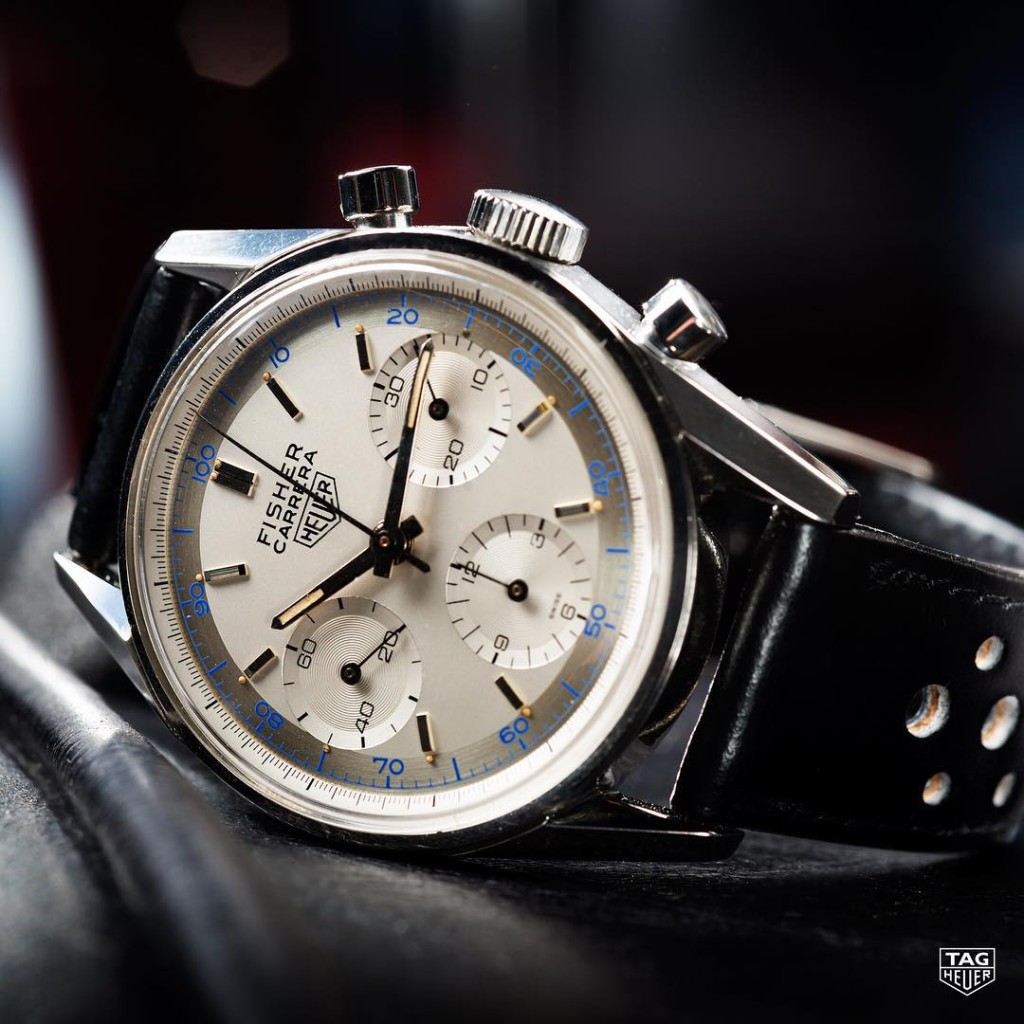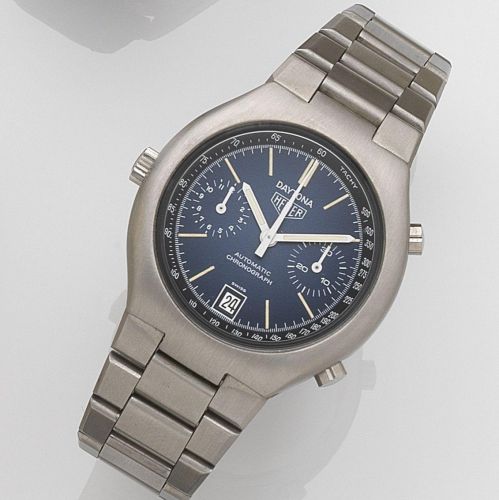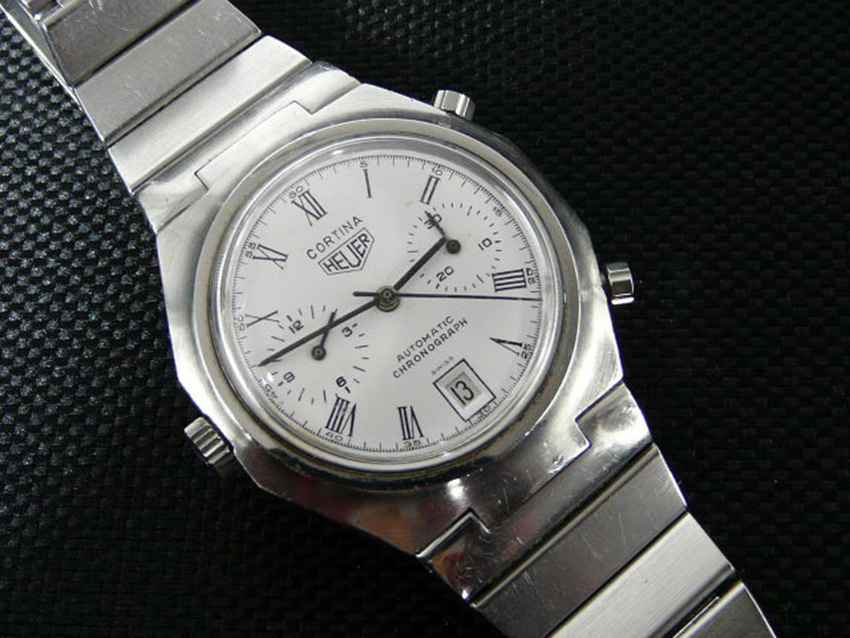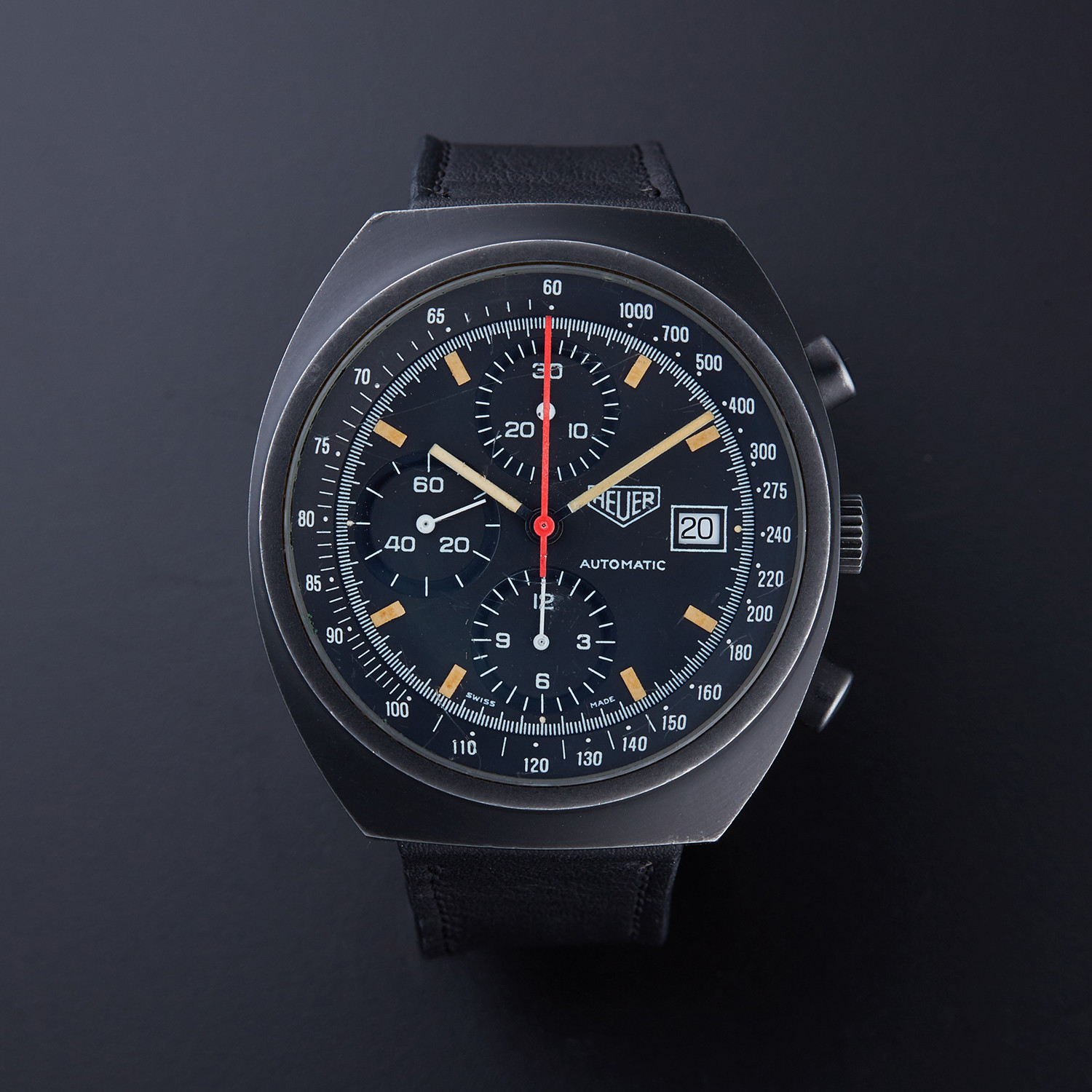


The Autavia has been recently re-released by TAG Heuer and people have been raving about the timepiece. Initially released in 1962, the Autavia was a dashboard instrument later becoming a wristwatch.

The Camaro was released in 1968 and powered by the hand-wound Valjoux 7733 movement and was never fitted with an automatic movement before being discontinued in 1972. The Valjoux 7733 movement was a no-date model, although some Valjoux 7734 date versions were sold with a Valjoux 7736 movement that included the 12-hour sub-dial. The two sub-dial format of the Valjoux 7733 movement offers a really clean and uncluttered dial.

The Monza was an economy version of the Carrera although its design was a re-edition of a 1930s inspired timepiece. The Monza used a brass version of a second generation carrera case with a chrome plate or PVD finish. The Monza was fitted with an in-house Calibe 15 movement, basically a low cost version of the Calibre 12 with a left side crown and right side pushers.

The Montreal, released in 1972 had a 42 mm brushed case with right hand fluted pushers and a left hand crown. The earlier series were white dials with an array of colours on the hands and sub-dials. The earlier models hand in-house movements with the later versions fitted with updated Valjoux 7750 movements.

Looking back now, it is hard to believe the Monaco was not a success when it was first released. The Silverstone, released in 1974 was the replacement for the Monaco. The square case with rounded corners came with three dial colours with sub-dials at the 3 o’clock and 9 o’clock positions.

Not only does Rolex have a Daytona chronograph, Heuer released their version in 1976. Rather short lived, the Daytona used Heuer’s in-house chronograph with the pushers on the right side of the case and the crown on the left. The 39 mm brushed case held an integrated three link bracelet that came with no leather strap options.

The Kentucky, with horseshoe shaped case is a chronograph but does not have the motorsport heritage of most Heuer chronographs. The Kentucky launched in 1977 targets the equestrian crowd with screws at the lower section of the case and the Heuer name plate attached.

The Cortina was released in 1977 and was fitted with the same dial, albeit with the name change and the sub-dial hands differed. The case was octagonal and an integrated single link bracelet was fitted. The Cortina had a choice of index markers or roman numerals on the dial with a left crown and right pusher format.

The Jarama appeared in 1977 and only lasted a couple of years, named after a racetrack near Madrid that hosted a number of Formula 1 events. This isn’t a great looking timepiece by any stretch of the imagination with the fluted bezel and isn’t hard to see why it was released in limited numbers.
The Verona was released in 1978 and returned to clean lines and style of 1960s design. The sub-dials were positioned at the 3 o’clock and 9 o’clock positions with the date at 6 o’clock. I find the internal angled tachymeter scale an interesting inclusion. The crown is positioned on the left-side of the case and chronograph pushers on the right-side case to wind, adjust and operate the Calibre 12 movement.

The Pasadena was released in 1979 and fitted with the Valjoux 7750 chronograph movement. The black 41 mm lugless case design appears to be an anodised steel or there were also stainless steel options available. The Pasadena transitioned back to the crown and pushers located on the right side of the case.

TAG Heuer has re-released a number of their vintage timepieces with the Carrera, Monaco and Autavia all listed in the current collection. I would argue that some of the vintage Heuer are not to my tastes although the Verona, Silverstone and possibly the Camaro might work for me.


No comments:
Post a Comment